Toyota/BYD/Volkswagen/Honda, which is the hybrid car?
At present, both fuel cells and power batteries have technical drawbacks that are difficult to promote on a large scale. As a transitional product that enters the "pure electric era", hybrid vehicles are the relatively easy to promote energy sources. One of the environmental solutions. What kind of car is a hybrid car? The current definition in the industry is this: Hybrid electric vehicle (HEV) is a multi-power source driven vehicle that combines an engine, an electric motor, and an energy storage device (battery, etc.) through an advanced control system. At present, there are many types of hybrid vehicles, which can be divided into three types: series hybrid, parallel hybrid, and hybrid hybrid. According to the degree of mixing (that is, the ratio of electric power) can be divided into: light mixing, medium mixing, heavy mixing (strong mixing). According to the charge, it can be divided into: Hybrid, Plug-In. 1, parallel hybrid The engine is mainly used, and the motor is auxiliary. The motor generally cannot drive the car separately. The system output power is equal to the sum of the engine and the motor output power. Representative models are: Honda CR-Z. 2, series hybrid A series hybrid system is closest to a purely electric system. The configured engine is only used to drive the generator to generate electricity without directly participating in driving the car. The system output power is equal to the motor output power. Representative models are: Chevrolet Volanda, GAC Chuanqi GA5 PHEV. 3, mixed type Both the electric motor and the engine can drive the car separately. Since the system is equipped with an independent generator, the system output power is greater than the sum of the engine and the motor output power. The hybrid system is complex in structure, but its power performance and fuel economy are excellent. Representative models are: Prius, Lexus CT200h, BYD Qin, Tang, Golf GTE, Accord Hybird and so on. According to the degree of mixing, we can interpret through a table: The hybrid type basically belongs to the strong mix, and the plug-in type can basically satisfy the electric power ratio of more than 25%, so it is also a strong mix. If you want to compare the hybrid technology which is strong, it is undoubtedly the strong mix of each other. So today, we will talk to you about the advantages and disadvantages of several mainstream hybrid models in the industry. In the current camp, there are roughly three major factions: Toyota, Volkswagen/BYD, and Honda. The reason why the public and BYD are divided into the same faction is that they have similar control logics of the driving mode except for the difference in the number of motors, which will be explained in detail later. 1. Toyota Department The Toyota THS system is a typical hybrid hybrid system. It has been developed to the second generation. THS is the abbreviation of “Toyota Hybrid Systemâ€. It was first installed on the first generation Prius. Below we will use the latest THS-II system. Explain the hybrid hybrid system. The main components of the THS-II system include an efficient engine for the Atkins cycle, a permanent magnet AC synchronous motor, a generator, a NiMH battery pack, and a power control unit. The key and most complex component of the THS-II system is the power distribution system consisting of two permanent magnet synchronous motors and planetary gears, also called E-CVT (Electronic Control Continuously Variable Transmission). The E-CVT is not a conventional CVT gearbox and does not have a steel belt. In order to better understand how it works, we interpret the operation of the various components of the E-CVT under several different operating conditions. The E-CVT has two motors (both as motors and generators) - MG1 and MG2. The MG1 is mainly used for power generation and speed control to start the engine, and the MG2 is mainly used to propel the car. The MG1, MG2 and engine output shafts are connected to the sun gear, ring gear and planet carrier of a planetary gear mechanism. The engine output shaft is connected to the planet carrier, the MG1 motor is connected to the sun gear, the MG2 is connected to the outer ring gear, and the power output is connected to the reducer and the differential. Power distribution is to control the MG1 and MG2 motors through the power control unit, and subtly distribute them through the planetary gear mechanism. When the vehicle is running, the sun gear connected to the MG1 motor is in forward and reverse rotation under different working conditions, and the outer ring gear connected to the MG2 motor will only reverse when the engine is engaged in reverse gear, and is connected to the engine. The planet carrier can only be in a stationary or forward rotation state. E-CVT mechanism operation logic under multiple working conditions 1. When the vehicle is starting up At this time, it is in pure electric working state, the engine does not start, and the carrier is fixed. The MG2 drives the planetary gear ring to propel the vehicle forward. At this time, MG1 is in an idling state. 2. When the vehicle is driving After the vehicle started, the MG2 motor could not continue to speed up the vehicle alone because the MG1 motor was set to the highest reverse speed and the vehicle was running at around 42km/h. At this time, the vehicle needs to continue to speed up, and the transmitter must drive the planet carrier to reduce the reverse speed of the MG1. At this point, the control unit will actively issue the model, let the MG1 motor act as the starter of the engine start, and start the engine to speed up the vehicle. After that, the engine and MG2 will increase in speed, and the speed of MG1 will change from reverse high speed to low speed, and finally to high speed of forward rotation. Of course, if the engine is under light load conditions, the engine will drive the MG1 motor to charge and supply the electric energy to drive the MG2. The MG2 provides additional driving force to supplement the engine power. If the engine is under high load conditions, the electronic control system of the THS-II system NiMH battery pack will also drive the MG2 motor according to the acceleration demand. The active component of this process is the engine. 3, the vehicle is accelerating When the vehicle starts or is traveling at low speed (less than 42km/h), if more power is required (the driver deeply steps on the throttle or detects excessive load), the MG1 will turn to start the engine. In this process, both MG1 and MG2 motors will be used as active components. If the speed is higher than 42km/h, the Ni-MH battery pack of the THS-II system will output current to the MG2 to provide more powerful power. 4. When the vehicle is decelerating The energy recovery during deceleration of the vehicle is the essence of the Toyota THS-II system. When the control system detects the deceleration of the vehicle, the system will recover the braking energy and charge the battery. In most of the current hybrid models, the brake kinetic energy recovery is designed in two gear conditions, both the conventional D gear and the brake recovery B (B is actually the abbreviation of brake). When the vehicle decelerates in the D gear, the engine stops, the MG1 idles, and the MG2 is driven by the wheel to generate electricity to charge the battery. When decelerating in the B range, a part of the electric energy generated by the MG2 charges the battery, and a part is supplied to the MG1, and the MG1 drives the engine. At this point, the engine is idling. The power output from the MG1 becomes the engine braking force. Therefore, when the B gear is decelerating, it will obviously feel that the vehicle will have a drag feeling in an instant. This feeling is like the feeling of closing the car with the manual gear. When the car is at high speed, it will be like the 3rd gear of 3000 rpm, and the low speed will be like the 2nd gear of 3000 rpm. Therefore, the use of the B-speed is designed to be used when going downhill, which can both use the recovered energy to slow down and reduce the wear of the brakes. When D gear is decelerating When B gear is decelerating The biggest advantage of Toyota's hybrid system is that its energy recovery system is real-time in any deceleration state, and the state of hybrid and pure electric driving is also switched in real time according to driving requirements through the electronic control system. By manually switching modes, the process is very smooth and the driving experience is very close to the CVT gearbox, so that's why Toyota named the system E-CVT. Toyota's THS-II system is smart and efficient, saving 30% to 50% of fuel for the models that carry it. This is why Toyota is proud and paranoid to adopt unplugged (Prius's plug-in is more to succumb to new energy subsidies in various regions of the world). The strategy is still able to ride the rivers and lakes. However, this system is not without a flaw. For example, when the B-speed of this system is slid downhill without stepping on the brakes, there will be no brake lights to warn the rear car. There are some safety hazards; for example, Toyota has always adopted Nickel-hydrogen environmentally friendly battery, but this kind of battery is bulky, heavy, and small in unit volume compared with lithium-ion battery. At the same time, there is battery memory problem, and regular maintenance is needed to eliminate the capacity attenuation caused by battery memory; For example, this system is born to save energy, not as violent as other plug-in hybrid power. Due to the limited length of the article, the plug-in hybrid of BYD/VW, the plug-in hybrid of Honda series variants and some suggestions for consumers who buy after-mixing will focus on the next one, so stay tuned. Plug-in parallel hybrids represented by Volkswagen, and plug-in hybrids represented by BYD. The main reason for putting the two brands together is that their hybrid systems are similar in structure and control strategy, and they all prefer performance. Volkswagen plug-in parallel hybrid In 15 years, Volkswagen has launched the Audi A3 e-Tron and Golf GTE hybrid models. In addition to the slight difference in capacity and total power of the lithium battery, the two vehicles have basically the same power and control logic. They are all made up of Volkswagen's EA211 1.4TSI engine, plus a motor (integrated with the generator and motor) and a set of lithium batteries, matched with a transmission called eS tronic. The eS tronic is actually based on the current Volkswagen third-generation 6-speed DSG gearbox, which is used to separate the electric motor and the engine. Next, I will use the power structure diagram of the A3 e-tron to explain the Volkswagen hybrid system. In contrast to the two figures above, we will find that Volkswagen's hybrid power system is much simpler than Toyota's THS. This system is simply a combination of three sets of clutches to achieve various modes of switching. The motor is housed in a special aluminum alloy housing with a 6-speed DSG dual-clutch transmission. It is connected to the DSG via two clutches K1 and K2, and there is a separate clutch K0 between the engine and the transmission. Its main function is to separate the connection between the motor and the engine. When driving on pure electric power, the engine does not work. If the engine and the electric motor are connected by the transmission mechanism, the electric motor will drive the crankshaft of the engine to rotate, thus wasting power. Therefore, when the engine is not working, the disengagement clutch K0 will both Disconnect and let the motor drive the vehicle alone to maximize the use of electric energy. There are four different driving modes for Volkswagen. The first thing to note is that, regardless of the mode, the Volkswagen hybrid is basically in a state of constant meshing between the motor and the gearbox (temporarily ignoring the shifting clearance of the dual clutch). In other words, if the engine needs a direct drive transmission, then the motor needs to be driven to rotate. Pure electric mode E-MODE: It is only driven by electric energy. At this time, the K0 clutch is disconnected, the engine does not participate in driving, and the output current is driven by the lithium battery pack. The engine is automatically started when the requested power cannot be supplied by the motor alone. Hybrid: The motor and the engine are driven at the same time. At this time, the engine meshes with the motor to drive the gearbox to drive the car. The electronic control system distributes the output of the power battery and the engine according to the driving situation. Charging mode: When the battery is exhausted, the engine will charge the power battery while driving, and at the same time drive the gearbox to drive the car. This state is the most fuel-intensive state of this system. High performance mode: This is one of the most fun driving modes of this system. Under the condition of sufficient power, the motor and the engine work at the same time. The electronic control system is always ready to output the maximum power under the current load according to the driver's throttle signal, so as to maximize the motion performance of the whole vehicle. As can be seen from the official data of the Audi A3 e-eron and Golf GTE, the system can achieve a maximum power of 150kW, a maximum torque of 350 Nm, and an acceleration time of 7.6 seconds from 0-100km/h. This is why the public dared to put this hybrid system on the Golf GT series, not afraid of the name "GT". In addition to these four driving modes, the system also integrates an energy recovery mode, and the shift lever in the D position continues to move backwards, and the vehicle will enter the energy recovery mode of the B range, at which time the vehicle is decelerated. At the time, the vehicle will convert the excess energy into electrical energy that is returned to the power battery at the rear of the vehicle. However, the start-up of this system has a speed limit, such as when the system is under ultra-high speed or ultra-low speed, the system will not start. This is because there is a significant brake deceleration after the B-speed mode is activated. The ultra-high-speed driving will cause safety hazards to follow the vehicle, and the low-speed taxiing will stop the vehicle faster. Therefore, when the system is started under the condition of threshold setting speed, the brake light will light up at the same time, warning the rear car. This is different from Toyota's B-file mode. Several modes of the system seem to allocate energy consumption reasonably. However, if the power is not plugged in and the battery power is exhausted, the overall fuel consumption is actually no more than the fuel consumption of the conventional 1.4T+6-speed DSG due to the weight of the battery pack and the load of the motor. And switching between different modes needs to be switched by manual physical buttons or screen touch, not very smart. At the same time, the battery pack is placed at the rear of the seat and also encroaches on the volume of the luggage. This also directly led to the failure of the GTE's trunk to place the spare tire, and Volkswagen's solution was to provide a cylinder and a tire fluid in the on-board tool. BYD plug-in parallel hybrid When it comes to mixing, we can't help but mention BYD. Among the independent brands, BYD's position in the field of hybrid is undoubtedly the leader, even earlier than many European and American brands. In the past two years, several hybrid models named after the dynasty have attracted much attention. When Qin entered the independent brand market with its performance parameters of eye-catching eyeballs, many people in the industry could not help but express their surprise. After BYD put forward the "542" new energy vehicle strategic plan, 5 means that all models accelerate within 5 seconds, 4 represents full four-wheel drive, and 2 represents 100 kilometers of fuel consumption in 2L. Tang and Song are products under the 542 strategic plan. Through BYD's 542 strategy, we see that BYD's hybrid system is more of a strategy to attack the performance department. Here I will focus on the mixed structure and control strategy of Qin and Tang. Qin is a plug-in parallel, Tang is a plug-in hybrid, which is actually a hybrid that has evolved by adding a rear-drive motor to the Qin plug-in parallel. Qin's plug-in hybrid structure is similar to Volkswagen's hybrid structure in that the motor is placed between the gearbox and the engine and integrated into the gearbox housing. The difference is in the engine, gearbox, and battery pack parameters, as well as the mode switching in actual driving. I will not focus on Qin here, and focus on the representative Tang under the BYD 542 strategy. Tang is based on Qin, and an independent motor drive system is added to the rear axle to drive the rear wheels. Its two motors have a total output of 200 kW and a torque of 500 N·m. Together with a 2.0T direct injection engine, the combined power output of the entire power system is 371 kW, or 497 hp. Accelerated 4.9 seconds in a hundred kilometers, which makes Tang's performance look very powerful, comparable to many super runs. Adding this motor allows Tang's drive mode to switch between parallel and series, and even the two modes work together. So this combination of Tang's is a plug-in hybrid. At the same time, Tang has a variety of mode drivers. Mode 1: Start and low speed stages, the battery provides electric drive rear wheel for rear click Mode 2: In the case of rapid acceleration or high load conditions, the front and rear motors are started, and the engine is also involved in driving. This is the most powerful mode of the system. Mode 3: The gasoline engine charges the battery, and the front axle motor acts as the engine. After the battery output current is driven, the motor runs to drive the vehicle. Of course, because the front axle motor and the gearbox are engaged, the front wheel is actually driven by the engine. This mode is the state with the highest fuel consumption. Mode 4: When the red light is in an idle state, the gasoline engine drives the front axle motor to charge the power battery. Tang's control logic is actually not complicated. The four modes are intelligently switched by the driving computer during driving. However, we found that the actual cruising range of Tang in the state of full power (18.4kW·h) and full oil (53L fuel tank) is only about 500km (multiple media measured, the official data is 700km, so the difference is so big, in the electric car I have detailed explanations in the article, interested readers can go to see). This does not have much advantage over conventional fuel vehicles. The reason is that Tang installed the hybrid system, the quality of the preparation reached 2220kg, and the lithium iron phosphate battery pack with a capacity of 18.4kW·h weighed more than 200 kilograms. At the same time, this system is biased towards performance, and the motor output power is too large, resulting in excessive consumption of the vehicle. When the power of the power battery is exhausted, the engine side drives the front axle, and the front axle motor is also charged to charge the battery to drive the rear axle. This process consumes a relatively high fuel. BYD Qin's battery capacity is 13kW·h, pure electric cruising range is 50km, Tang's battery capacity is 18.4kW·h, and cruising range is 84km. Looking at these two sets of data, we can also find some problems. At present, the plug-in hybrid lithium cobalt oxide and ternary lithium battery capacity of other manufacturers are basically around 8 kW·h, but it can maintain a cruising range of 50km. A large part of the reason is that the size of the lithium iron phosphate is large, the weight is heavy, and the rigidity of the body is correspondingly required to be stronger, so that the load of the whole vehicle is further increased. At the same time, the lithium iron phosphate itself has poor discharge capacity in low temperature environment and poor battery consistency, which restricts the distance of the current battery life range of BYD hybrid models. BYD's choice of lithium iron phosphate is still due to the low cost of lithium iron phosphate, high temperature resistance and BYD's technical accumulation in this area, making him the first choice for BYD's new energy. Summary: Through the mixed interpretation of Volkswagen and BYD, we found that these two systems are more biased towards the hybridization of power performance output. If Toyota's THS is an unplugged ballad, the mix between Volkswagen and BYD is more like plug-in rock. For consumers who drive less than 100km per day, they do have both fuel consumption and driving pleasure. But for long-distance drivers, compared with Toyota THS, they are not the first choice for energy saving and environmental protection, more like the choice of driving pleasure. Of course, the premise is that the consumers who buy them have a parking space that can be easily charged. Volkswagen's plug-in parallel hybrid, BYD's plug-in hybrid mixing. The last part of this series came to be mixed with everyone's other field, Honda. Honda has always seemed to be low-key in the hybrid field, and the name is not as loud as Toyota and BYD. However, this is just the appearance we have never understood. If Toyota is relying on THS to eat freshly all over the sky, Honda is to gather the length of each family, play the folk songs, rock and roll, and soft and soft. The time when Honda is involved in mixing is actually much earlier than most companies. The first developed a parallel hybrid system called IMA (Integrated Motor Assist) system (also known as "weak" Hybrid"), and has launched the Insight including the front and rear two generations, as well as several hybrid production models such as Civic hybrid, Accord hybrid, CR-Z, Fit hybrid. However, due to the structure and design of the IMA system itself, the energy-saving effect is not ideal, and it is almost completely abused compared with the competitor Toyota THS-II. This is almost unbearable for Honda, who is called "technical control" and "paranoia" in the field of automotive power. So Honda took a big move and launched three hybrid systems in one go. The three Honda systems can be equipped according to different models. For the low-end model, the i-DCD (Intelligent Dual Clutch Drive) system with one motor, the power system is composed of a 1.5L Atkinson cycle engine and a 7-speed dual-clutch gearbox with integrated motor. Currently, it is mainly used in the hybrid version of Fit. For mid-range models, i-MMD (Intelligent Multi Mode Drive) system with two motors, the main components are 2.0L Atkinson cycle engine, E-CVT (electrically coupled CVT and Honda) The THS set of CVTs is completely different) and consists of two sets of motors, which are currently mainly used in hybrids of the Nine-generation Accord. For high-end models, the Sports Hybrid SH-AWD (Sports Hybrid-Super Handling-All WheelDrive) with three motors. The dynamic power of this system is complex and the power of the front axle. Similar to the i-DCD, it only replaces the larger displacement motor and the higher power motor. The rear axle is equipped with a set of lithium batteries. The left and right wheels are driven by a group of motors. Currently mainly used in NSX and Acura. On the RLX Hybird. In the three hybrid systems of Honda, the i-DCD is similar to the parallel hybrid of Volkswagen, while the Sports Hybrid SH-AWD is the i-DCD of the four-wheel drive stiffener, which is completely biased. The i-MMD is a partial energy-saving orientation. This article I want to focus on is the Toyota i-MMD system, which is known as the "world's most fuel efficient" hybrid system. Is it true that Wang Po sells melons? The essence of Honda's i-MMD system is actually a variant of series hybrid. On the basis of series, the engine is coupled with E-CVT at high speed, and the engine can directly participate in the drive and evolve into hybrid. One of the motors is in a fixed connection with Honda's Earth Dream series engine. The engine drives the motor to charge the power battery, and the other motor is used to drive the vehicle. This system can be equipped with two different lithium battery packs depending on whether it is plugged in or not. Here we should focus on the interpretation of this electrically coupled CVT, which can be easily understood as an automatic transmission or clutch with only two gear positions. Its essence is also a very simple gear mechanism, only two fixed gear ratios, first: 2.45 (when the motor is driven) 0.803 (when the internal combustion engine is driven) Second: 3.421. When the car is in the starting or low speed mode, the larger gear ratio is used. At this time, the motor that is separated from the clutch and fixed to the engine, only the motor drives the car. The smaller reduction ratio of the other group, which is the gear ratio used by the overspeed gear we often say, is suitable for high-speed cruising, which is the clutch engagement engine to drive the car at high speed. When the speed is reduced and the engine torque output is insufficient, the PCU will follow the motor, and the power output of the whole process will be seamlessly connected from low speed to high speed like the CVT gear box. There are three drive modes for the i-MMD system: Pure electric drive mode, suitable for urban traffic jams and low speed driving. In this mode, the vehicle is driven by the motor, the gasoline engine does not start, the power separation device is disconnected, and the energy that drives the vehicle is directly derived from the lithium battery pack of the vehicle. The electric energy stored in the lithium battery pack is supplied to the driving motor via the PCU to drive the two front wheels to rotate. If the battery is low, the gasoline engine will start to drive the generator to generate electricity and supply power to the drive motor. Hybrid drive mode, used when accelerating. This mode is a highlight of the i-MMD system. Similar to the extended-range electric vehicle, the vehicle is not propelled by the electric motor and the gasoline engine. Instead, the gasoline engine drives the generator with full force, and then the generator supplies power to the motor. The gasoline engine works to power the electric motor. The electric motor provides the low-speed and high-torque characteristics that the gasoline engine cannot provide, which makes the acceleration performance of the vehicle more powerful. Engine drive mode for use during high speed cruising. This mode is similar to an ordinary car. The engine is coupled with the E-CVT by ionization, and the power is directly supplied by the engine. Although the battery pack is in the standby state, the drive motor can be switched to the hybrid drive mode at any time for further acceleration. At all stages, when the vehicle brakes, the gasoline engine and the drive motor cease to function, and the brake energy recovery system begins to function to provide additional energy to the battery pack. The Honda system also has a B-speed mode. Like the Toyota THS, the recommended working conditions for this model are on the downhill section. Although there are only three driving modes for the i-MMD system, it is very efficient. We know that when the car is driving, in most cases the engine is not in the economic speed range. In the mixed mode stage of i-MMD, because the engine does not participate in direct drive, the engine can be calibrated to the economic speed range to drive the motor to run, the power battery is charged, and the battery output current drives another group of motors to drive the vehicle. The high-speed mode engine over 100km is directly involved in the drive. At this stage, the engine output is also in a relatively low-torque high-efficiency stage, and it compensates for the insufficiency of the motor in the hybrid mode. The control strategy of this system combines Honda's energy-unmatched Earth Dream engine, and it is true that the current "world's highest fuel efficiency" hybrid system is also unsurpassed. The level of fuel consumption of this system, we can refer to the value of the Accord Hybrid's authoritative EPA in fuel consumption measurement (US EPA, the institution that is currently punishing the public for cheating.) In the EPA's test with its rather stringent 2014 standard (Note 1), Accord's urban road condition fuel consumption is 47MPG (about 5.0L/100km), and high-speed road condition fuel consumption is 46MPG (about 5.1L/100km). The comprehensive road condition fuel consumption is 46MPG (about 5.0L/100km). The test value under the JC08 condition in Japan is at least 30km/L, which translates to 3.3L/100km. The Accord Plug-in with a larger battery pack can even be as low as 115MPG (about 2.0L/100km). And with such low fuel consumption, the Accord Hybrid's 0~96km/h is only 7.2s, which can be said to be both fuel consumption and performance. Speaking of domestic fuel consumption calculations, here also have to spit a few words. The current calculation scheme for mixed fuel consumption of the Ministry of Industry and Information Technology is not reasonable. The fuel consumption calculation method of plug-in hybrid is: Comprehensive fuel consumption = (pure electric mileage * pure electric fuel consumption + air mileage * air fuel consumption) / (air mileage + pure driving mileage) Since the pure electric condition does not consume gasoline, the value of "pure electric fuel consumption" is zero. In addition, the standard also stipulates that "airborne mileage (engine work only)" is 25 kilometers. It is not difficult to understand why the data in the following table appears: The US Environmental Protection Agency EPA also uses electrical energy as part of the fuel energy consumption, and gives the conversion standard, 33.7kWh electric energy = 1 gallon gasoline, which is 8.9kWh electric energy = 1L gasoline. Domestic fuel consumption test methods for hybrid vehicles are not rigorous enough. At present, the road spectrum acquisition of test conditions is only four representative cities, and the setting of working condition threshold is also tricky, so the actual cruising range under pure electric conditions. In many cases, the manufacturer's nominal value is not reached. But regardless of the test standard, the actual fuel consumption figures for these models are not so good when the single mileage exceeds 200km. Of course, because the measurement standard of the plug-in hybrid fuel consumption is difficult to measure with a unified standard because of the difference in the use environment. However, if the mileage of a tank of oil is simple, Honda's i-MMD and Toyota's THS-II system are undoubtedly the winners of this endurance race. to sum up: Through three articles, several mainstream hybrid technologies are summarized. We will find that the current hybrid technology has its own advantages and disadvantages. The major manufacturers have developed different control strategies and biased hybrid technologies according to market demand. If you have to make a comparison, I will give the following conclusions. Hybridity of low fuel consumption strategy: I will award the champion to Honda's i-MMD (unplugged) and Toyota's THS-II in a single long-term use condition of more than 200km. The former's control strategy is to allow the engine to operate under high-efficiency conditions in most cases, while the latter relies on its efficient and intelligent power recovery. However, due to the complexity of Toyota's THS-II structure and control logic, Honda's i-MMD seems to be slightly better than Honda's i-MMD, which is more expensive to manufacture and the cost is ultimately passed on to consumers. One. For short-range conditions within 200km, I will still award the champion to the ultra-low-fuel plug-in Honda i-MMD (before the fourth-generation Prius has not been plugged in). Hybrid performance strategy: From the performance parameters, Honda Sports Hybrid SH-AWD and Porsche 918 Spyder will undoubtedly be the champion. Due to the weight and dynamic parameters of the models, it is difficult to compare them. Out of the box. But these two systems are expensive to the hefty manufacturing costs, making most home-type cars prohibitive. Therefore, BYD Tang’s plug-in hybrids, which are more cost-effective to manufacture, are worthy of admiration. LED wall washers are high
power LED lights that are used for decorative lighting and highlight, or wash
walls, of buildings, clubs, hotels, stages, parks, plazas, commercial building
facades, art galleries, etc., with different kind of colors. Indoor Wall Washer,Led Christmas Wall Washer,Led Light Wall Washer,Led Outdoor Wall Washer ZHONGSHAN G-LIGHTS LIGHTING CO., LTD. , https://www.glightsled.com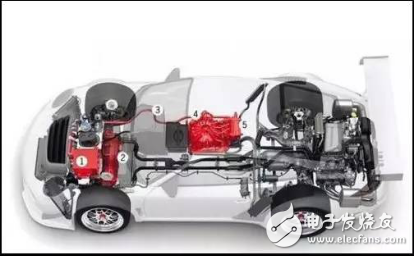
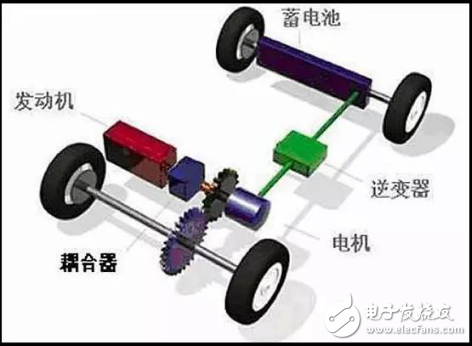
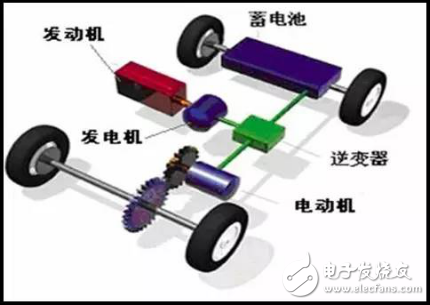
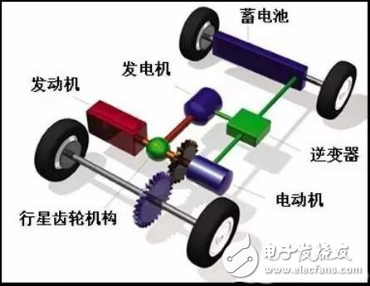

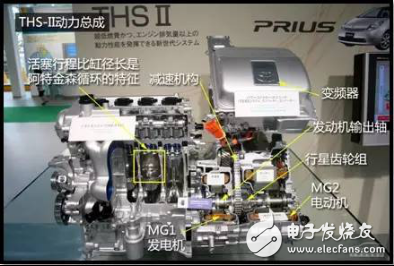
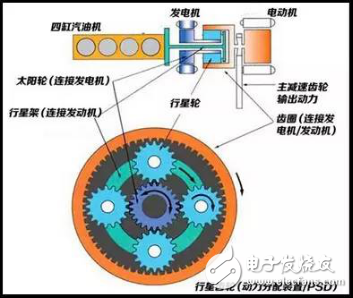
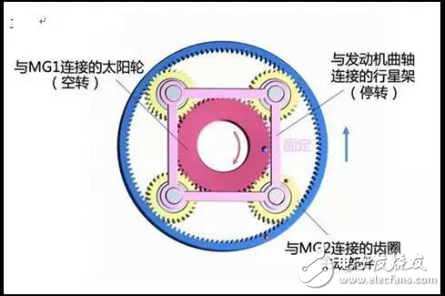

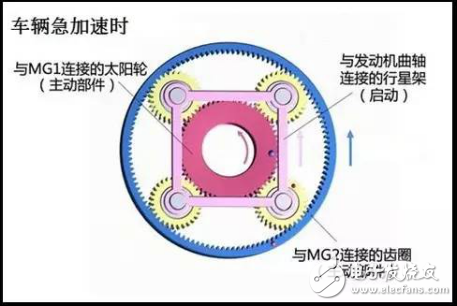

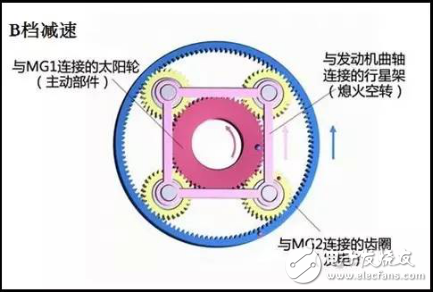
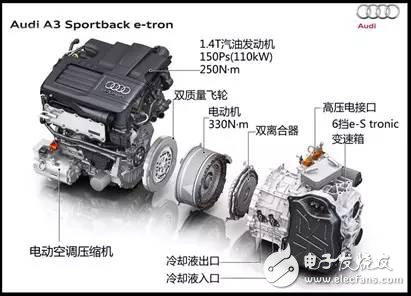



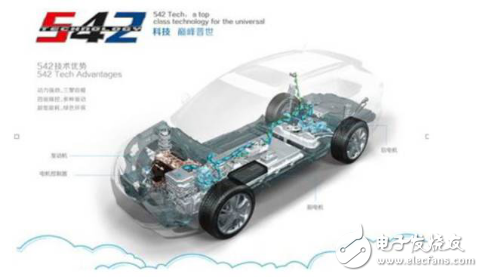

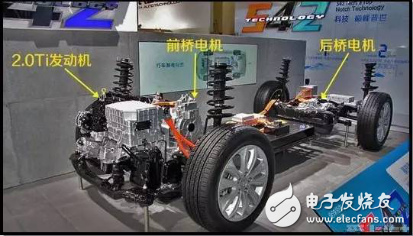
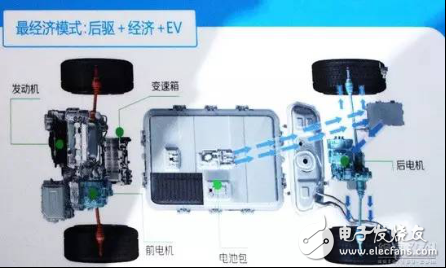
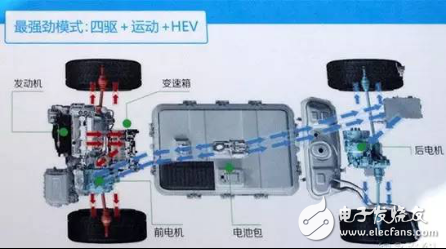
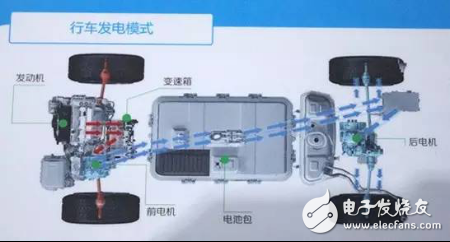

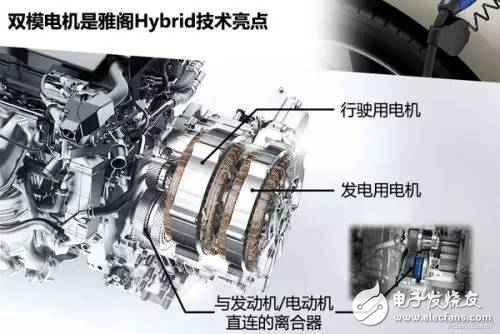
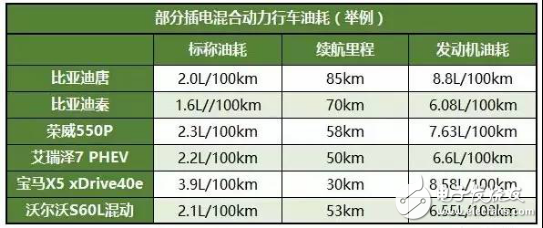
The LED wall washer can even change their colors while projecting. The RGB LED
wall washer lights can project various colors and change the color by
programming the LED wall washer the way you want to. LED wall washers can be
used for clubs, stages, parks, plazas, commercial building, art gallery,
landscape, architectural decoration, etc.